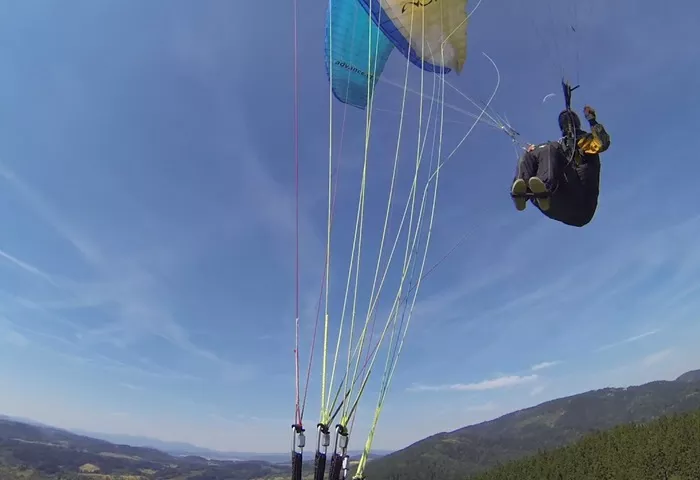Paragliding, while exhilarating and rewarding, involves inherent risks that can lead to accidents. Understanding why paragliders crash is crucial for both novice and experienced pilots to enhance safety and mitigate risks. This article delves into the primary causes of paragliding crashes, providing insights and strategies to prevent them.
1. Human Error
Human error is the most common cause of paragliding crashes. Mistakes in judgment, miscalculations, and poor decision-making can lead to dangerous situations.
Inadequate Training
One of the primary contributors to human error is inadequate training. Pilots who do not receive proper instruction or fail to complete comprehensive training programs are more likely to make mistakes. Training should cover various aspects, including weather conditions, equipment handling, and emergency procedures.
Poor Decision-Making
Paragliding requires constant decision-making, from choosing the right time and place to fly to managing in-flight adjustments. Poor decision-making, such as flying in unsuitable weather conditions or ignoring warnings, can result in accidents.
Overconfidence
Experienced pilots may become overconfident, leading to risky behavior. Overconfidence can result in ignoring safety protocols or pushing limits beyond what is safe. Maintaining humility and respect for the sport’s risks is essential for safe flying.
2. Equipment Failure
Equipment failure is another significant cause of paragliding crashes. Ensuring that all equipment is in top condition is crucial for a safe flight.
Parachute Malfunction
Parachute malfunctions, such as line twists, canopy collapses, or fabric tears, can lead to crashes. Regular maintenance, inspections, and timely repairs are necessary to prevent such issues. Pilots should also practice emergency procedures to handle malfunctions effectively.
Harness Issues
The harness plays a critical role in controlling the paraglider and ensuring the pilot’s safety. Issues such as faulty buckles, frayed straps, or improper adjustments can compromise safety. Regular checks and proper adjustment of the harness are essential to avoid accidents.
Reserve Parachute Deployment
The reserve parachute is a critical safety device used in emergencies. Failure to deploy the reserve parachute correctly or not having it in working condition can lead to crashes. Pilots should ensure that their reserve parachute is always ready for use and practice deployment procedures regularly.
3. Weather Conditions
Weather plays a significant role in paragliding safety. Understanding and adapting to weather conditions is vital for preventing crashes.
Wind Conditions
Strong or unpredictable winds can make paragliding dangerous. Winds can cause turbulence, make landing difficult, and affect control. Pilots should avoid flying in strong winds and stay informed about wind conditions through reliable sources.
Turbulence and Thermals
Turbulence and thermals can create unstable flying conditions. Sudden changes in air currents or updrafts can lead to unexpected movements and control issues. Pilots should learn to recognize and manage turbulence and thermals to minimize risks.
Weather Forecasting
Accurate weather forecasting is crucial for planning safe flights. Pilots should check forecasts regularly and be prepared to adjust plans based on changing weather conditions. Using tools and apps designed for paragliding can help pilots stay informed.
4. External Factors
External factors, such as obstacles and environmental conditions, can also contribute to paragliding crashes.
Obstacles
Obstacles such as power lines, trees, or buildings can pose serious hazards. Pilots should be aware of their surroundings and avoid flying near potential obstacles. Proper planning and route selection can help prevent collisions.
Terrain
The terrain can affect landing and takeoff conditions. Rocky or uneven terrain can increase the risk of accidents. Pilots should choose landing and takeoff sites carefully and assess terrain conditions before flying.
Wildlife
Wildlife encounters can be unpredictable and dangerous. Birds or other animals may interfere with the flight, leading to accidents. Pilots should remain vigilant and be prepared to react to wildlife encounters safely.
Pilot Fitness
Physical and mental fitness is crucial for safe paragliding. Fatigue, stress, or health issues can impair a pilot’s ability to fly safely.
see also: How Many People Die A Year From Bungee Jumping?
Physical Health
Pilots should maintain good physical health to handle the demands of paragliding. Conditions such as dizziness, fatigue, or physical ailments can affect performance. Regular exercise and health check-ups are essential for ensuring fitness for flying.
Mental Preparedness
Mental readiness is as important as physical health. Stress, anxiety, or lack of focus can impair judgment and decision-making. Pilots should practice mental preparedness techniques and manage stress to ensure optimal performance.
Conclusion
Understanding the causes of paragliding crashes and implementing preventive measures can significantly reduce the risk of accidents. By addressing human error, equipment failure, weather conditions, external factors, and pilot fitness, paragliders can enhance their safety and enjoy the sport more securely.
Paraglider crashes often result from a combination of human error, equipment failure, weather conditions, external factors, and pilot fitness. Addressing these areas through proper training, equipment maintenance, weather awareness, and physical and mental preparedness can help mitigate risks and improve safety. Ensuring a comprehensive approach to these factors is essential for enjoying a safe and rewarding paragliding experience.
FAQs:
How can inadequate training lead to paragliding accidents?
Inadequate training can result in poor decision-making, lack of skill in handling equipment, and insufficient knowledge of safety procedures, increasing the risk of accidents.
What should I do if my paraglider’s parachute malfunctions?
Practice emergency procedures regularly and ensure that your parachute is well-maintained. If a malfunction occurs, follow the manufacturer’s guidelines for handling the issue and deploying the reserve parachute if necessary.
How do I choose a safe flying site?
Choose sites with minimal obstacles, suitable terrain, and favorable weather conditions. Conduct a thorough assessment of the area and check for potential hazards before taking off.
What role does mental preparedness play in paragliding safety?
Mental preparedness is crucial for maintaining focus, managing stress, and making sound decisions. Pilots should practice techniques to stay mentally fit and handle the demands of the sport effectively.
related topics:
- What Is The Chance Of Injury Paragliding?
- What Is Paragliding Sport?
- How Much Does It Cost To Start Paragliding?

